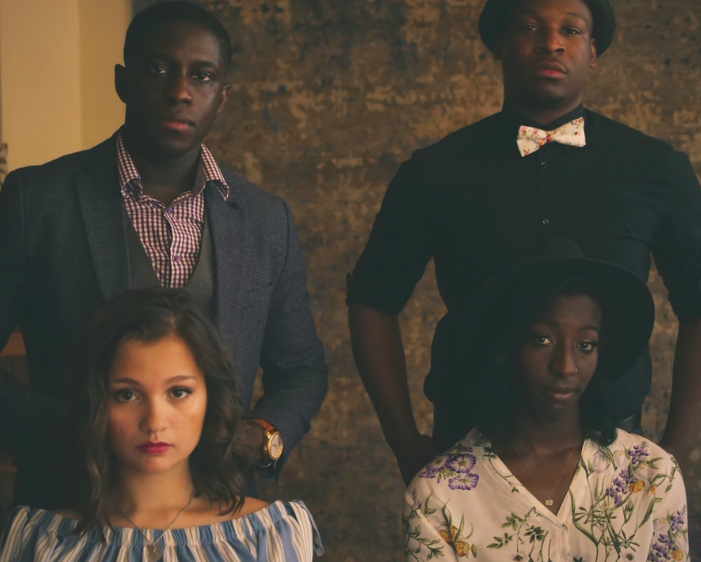Culture June 25, 2018
Diversity isn't a coincidence; we have to make it a priority.


In the land of storytelling, the question of who gets to do the talking is unavoidable.
Too often the answer, whether implied or stated outright, has been “white people.”
Some within the entertainment industry have become aware or made others aware of the current lack of diversity. However, the journey toward equitable representation is long and nowhere near finished. Here is where we stand right now with diversity in Hollywood.
Perception of diversity may vary, but the numbers cannot be denied. According to a study at UCLA, white actors outweigh actors of color in film leads almost three-to-one. The same study found that in film leads, men outnumbered women nearly two-to-one. This is pretty scary stuff, especially when we consider that women actually comprise more than half of the population.
It’s not just happening in star territory, either. A similar study conducted at USC found that only 28.3 percent of all speaking roles were filled by underrepresented racial/ethnic groups. The number of speaking roles only raises to 33.5 percent for women. This study covers more than film, reporting on storytelling across all digital mediums.
This lack of diversity is not only present on screen, but behind the scenes as well. UCLA’s study found that only 12.6 percent of film directors were from marginalized groups. Moreover, only 8.1 percent of film writers were from marginalized groups.
The danger here is that not only does the entertainment industry fail to provide representation in story translations, but it also fails to pick representative stories. We limit whose story we tell when we exclude people of color from writers’ rooms and directors’ chairs. This is how society rewrites history, as those in power hold the pens.
The effects of a lack of diversity in Hollywood radiate beyond the studios. For white people, especially white males, it may seem the norm to see different versions of yourself on screen. In fact, it’s most common to see successful, happy versions of white people throughout entertainment. Professor Martins of Indiana University Bloomington is quoted by CNN on the subject of white characters in television, saying, “[White males] tend to be in positions of power; you have prestigious occupations, high education, glamorous houses, a beautiful wife, with very little portrayals of how hard you worked to get there.” Thus, the entertainment industry reinforces the construct of white people as superiors.
When Hollywood does include marginalized actors, they cast them in derogatory, stereotypical roles. Ask yourself, how often have you seen black characters in prison? How many time have you seen transgender characters as prostitutes? This type-casting does not assist with representation on screen, but rather hinders it. This is because it limits identities, narrowing down the full, living experiences of under-represented groups to a degrading stereotype.
One study tested the self-esteem of young people ages 7 to 12 in correlation with TV watching. According to CNN, the study found that “[t]he self-esteem of white girls, black girls and black boys decreases with TV consumption,” and it increases amongst white males.
Michael Brody, chair of the media committee of the American Academy of Child and Adolescent Psychiatry, offered CNN an explanation. He said, “It affects them when they don’t see themselves represented on TV, and it affects them when the young people who look like them are seen doing something wrong.” This makes sense. If the only characters who looked like you were always in trouble, you may easily feel a sense of shame through association.
For many years, the industry has used “color blind casting” to proliferate diversity in Hollywood. According to the LA Times, this means “selecting actors without taking ethnicity into account.” While on the surface this seems like an appropriate solution, it can easily lead to white-washing. White-washing boils down to using white actors in non-white stories.
If we continue to use color blind casting, one can easily excuse white-washing. A casting director could say, “I can cast a white person in an Asian person’s role because I didn’t pay attention to the actor’s race.” This is dangerous territory. It leads to more erasure of people of color from the historical narrative.
Casting is now becoming “color-conscious.” This form of casting recognizes that you cannot ignore race without also ignoring the history attached to someone’s identity. Diep Tran, who is the associate editor of American Theatre magazine, is quoted in the LA Times explaining, “we’re aware of the historic discrimination in the entertainment industry, and we’re also aware of what it means to put a body of color onstage.”
There is danger here, too, however. One could potentially use color-conscious casting to see an actor purely for their race. This can lead back to stereotypical casting.
There is not one solution to repairing the injustice that has existed in exclusionary casting. However, by becoming more aware and filling roles once reserved for white people with actors of color, the entertainment industry is moving in the right direction. Hollywood also has to adjust its creators, giving people of color the chance to tell their own stories.